How to Use Chatbot for Marketing (With Examples)
In the AI era where everything is being automated, the use of chatbot for marketing is also on the rise.
Chatbots are no longer just simple tools for customer service – they're now a vital part of the marketing toolkit. With the right chatbot marketing strategy, businesses can offer 24/7 customer service, engage customers more effectively, and ultimately drive more sales.
This guide gives you a complete overview of the benefits chatbot can bring to your business. It includes some successful examples of chatbot marketing and the best practices to use them. Plus, you'll learn how to create your own chatbot for marketing without coding.
Part 1. What is Chatbot Marketing?
Chatbot marketing is all about the use of chatbots in marketing, which are computer programs designed to automate the process of interacting with customers.
Chatbots can be used on websites, social media and other digital channels to welcome new visitors, answer frequently asked questions, generate leads, or guide customers to the right solution.
Imagine a customer lands on your website and wants to know more about subscription plans. Instead of digging around your site or waiting for an agent to respond, a chatbot appears to help. It quickly guides the user to the information they need.
Rule-based Chatbot VS AI-powered Chatbot
There are two types of chatbot that are more commonly used in marketing: Rule-based or AI-powered. Rule-based chatbots follow a set of predefined rules and will only provide answers to specific questions based on those rules, it's implementation is based on if-then statements.
Rule-based chatbots do not require complex programming or training data, allowing marketers to have precise control over their responses. However, they struggle with handling unforeseen user inputs.
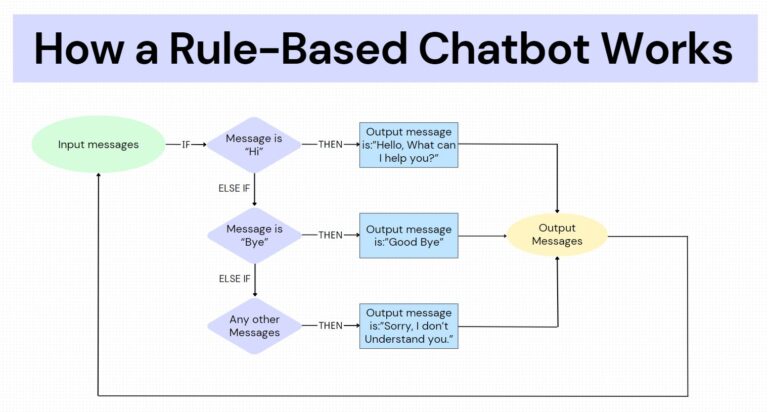
Meanwhile, AI chatbots can understand and respond to customer queries just like humans. These AI chatbots use natural language processing and can learn and improve on their own. They can effortlessly handle a variety of user questions, even those not pre-defined. Over time, they continuously improve their responses through self-learning, offering users better answers as they evolve.
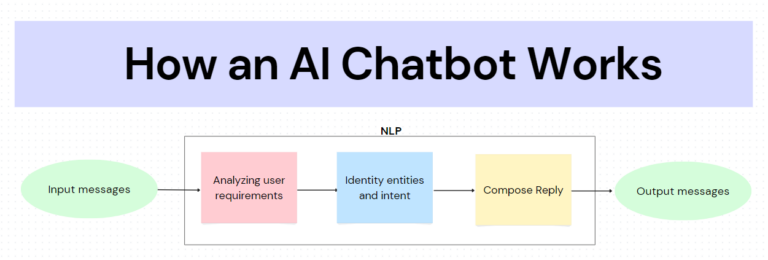
Part 2. How Chatbots for Marketing Boost Conversions?
Chatbots allow businesses to have interaction with customers 24/7 and provide personalised responses in real time. They help keep customers engaged and can convert inquiries into sales.
In some industries, chatbots have been found to increase conversion rates by up to 70%. E-commerce websites are the best example of this.

Below are some additional ways marketing chatbots can increase conversion rates:
1. Engage Leads
Chatbots are useful for engaging with potential customers in the sales funnel. According to Drift's State of Conversational Marketing report, using online chatbots has helped 55% of businesses collect high-quality leads.
By interacting with website visitors in real-time, chatbots help you collect important contact details instantly. They can also answer frequently asked questions and recommend products or services based on customer needs.
2. Guiding Users to Better Results More Quickly
Every visitor to your website comes with a purpose - they might be looking for information, browsing products, or wanting to buy something. Chatbots can quickly direct users to the right solution or connect them to a human agent when needed.
Adding a chatbot to your marketing strategy can automate 80% of repetitive and routine tasks while answering customer queries more efficiently. This leads to a better user experience and increased conversion rate.
3. Saving on Labour Costs and Time
The growing demand for 24x7 automated customer service and the need to cut operational costs have made chatbots an attractive option for businesses. Now, businesses can handle tasks and serve customers without needing human labour.
Chatbots offer instant replies to customer questions at any time, which greatly reduce time limits and cut customer service expenses. IBM estimates that using chatbots can help businesses save up to 30% in customer support costs.
4. Gaining Insights into Users for Upselling
You can use chatbots to understand customer behaviour and data to make personalised upselling recommendations in real-time, unlike traditional marketing that relies on tracking customer history and sending marketing emails later.
Chatbots engage customers in conversation, learning about their likes, interests, and needs. This information is then used to recommend relevant products or special offers. Business leaders report that, on average, chatbots boost sales by 67%.
5. Personalised Experience for Every User
Because every interaction with a chatbot is unique, users feel like they're having a personalised experience. Using past data collected by chatbots, it is possible to further personalise the experience by addressing users by name or by customising responses to their specific needs.
Chatbots are also more efficient – they can handle multiple queries at once while keeping things personalised.
Part 3. Chatbot Marketing Examples
Chatbots are quickly becoming a key tool in marketing, with businesses across a variety of sectors using them to gain an edge. They are being incorporated into websites and mobile apps alike to better serve the needs of users.
Interestingly, 58% of B2B companies now use chatbots as part of their marketing strategy. Below are some examples of well-known companies using chatbots in their marketing efforts.
1.H&M's Style Assistant Chatbot
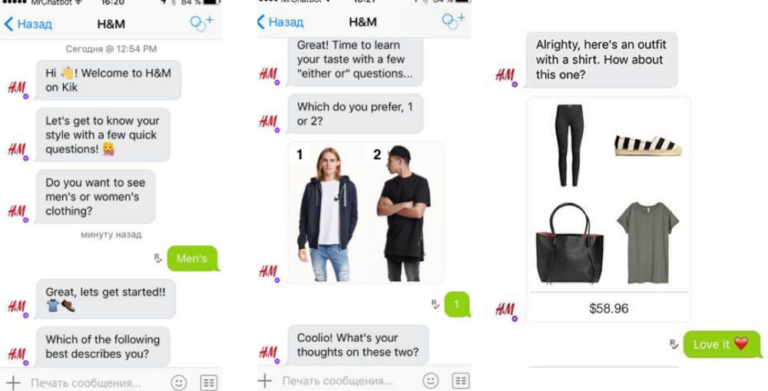
H&M's Style Assistant chatbot is a good example of AI chatbots used in marketing. Available on the Kick Messenger app, it helps users find clothes that match their style preferences. Being AI-based, it understands user requests through natural language processing to offer personalised recommendations.
The bot starts by asking a few questions to understand the user's style. This approach is useful because shoppers are becoming more style-conscious and selective about their purchases, making it important for bots to understand user preferences from the start.
Now, instead of having the user sift through hundreds of clothing items, the chatbot provides personalised recommendations based on each user's preferences. It also provides style tips, helps find clothes, and simplifies the shopping process.
H&M's AI chatbot increases customer engagement and sales by helping customers find the right products. It also uses data from chats to personalise the experience and recommend products likely to interest the customer.
2.Domino’s Pizza Ordering Chatbot
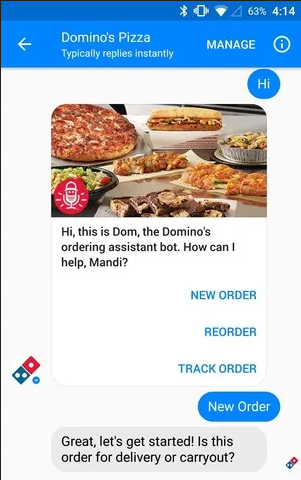
Recent data shows that 70% of customers favour the convenience of ordering food online with home delivery services. In response to this customer preference, Domino's Pizza has developed a customer service chatbot for Facebook Messenger.
This strategy not only enhances the customer experience but also reduces the load on the phone lines and prevents the website from being overwhelmed during peak traffic.
The chatbot makes it easy to order pizza and track delivery, while also offering deals and discounts for a seamless experience. It is available 24/7, allowing customers to order anytime without making a phone call. Furthermore, it remembers your past orders, making it easy to order again.
The chatbot, named "Doom," perfectly matches the company's branding. It has successfully managed over 1.5 million interactions with a 90% accuracy rate in completing orders. As mobile and social shopping continues to grow, Domino's has already hit a major milestone with its successful social bot.
3.Adobe Customer Service Chatbot
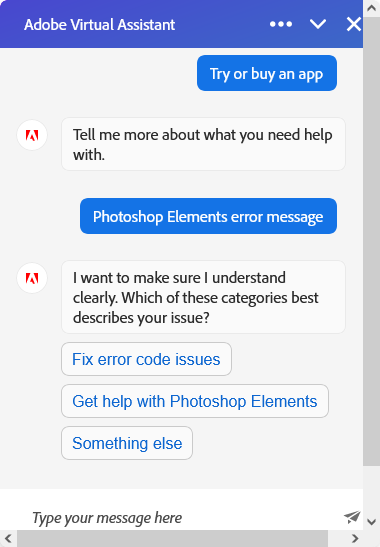
Adobe, a global software corporation, has incorporated a chatbot into its marketing strategy to enhance customer service and engagement. Their website features a chatbot designed to assist with various inquiries or issues.
The chatbot Adobe uses is rule-based, not AI-powered. It gives options like "I want to cancel my subscription" or "I need help with installation." Based on what the user picks, the chatbot then provides the appropriate information and solutions.
If you need help or wish to speak with a live agent, your request can be promptly directed to a customer service representative. In the example below, when we asked about Photoshop Elements, it quickly redirected us to the appropriate support page.
This chatbot guides users to various resources on the site and assists with account inquiries. It simplifies the process for customers to quickly find the information they need.
Part 4. How to Create Your AI Chatbot for Marketing without Any Coding?
The future where chatbots become the main channel for customer service isn't far off. More than half (58%) of B2B companies have already added chatbots into their website experience.
If you're considering adding a chatbot to your business, here's a straightforward guide to creating a marketing chatbot without any coding using ChatInsight.
Building a chatbot can be tough, but ChatInsight simplifies the process. It allows you to create a no-code AI chatbot that you can train with your own knowledge base.
This chatbot does more than just basic responses. It's designed to understand the user's intent and reply in a natural way. You can deploy it across multiple platforms as well.
Follow these steps to create a fully functional chatbot for your organisation.
- Step 1. Sign up for ChatInsight
- Visit the official ChatInsight website and click on "Start for Free." Enter your details to create an account.
- Step 2. Create a Knowledge Base that Fits Your Business
- In this step you need to define your goals and user requirements. Create your knowledge base according to your goals, for example, if you are creating an AI chatbot to reduce the frequency of your employees responding to the same questions, then you need to incorporate these repetitive questions into your knowledge base. Or, if you need to promote your brand awareness through chatbot, then you need to compile your brand culture and company profile into your knowledge base.
- After you have created your knowledge base in txt format, click "Knowledge Base" in the left menu bar - "New Category" in the upper right corner - select "Create " or "Upload".
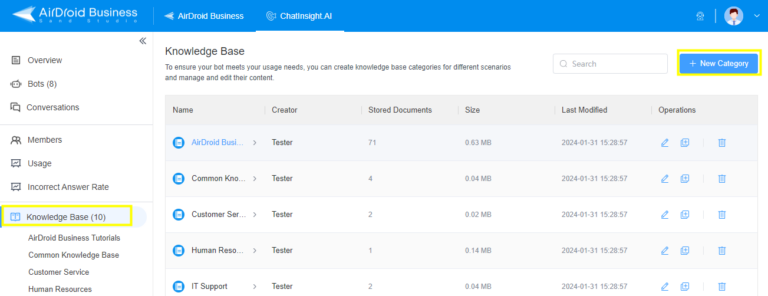
- Step 3. Create a New Bot
- On the left side of the ChatInsight dashboard, click on the "Bots" section and then press the "New Bot" button.
- Enter the basic details for your chatbot, including name, description, and title.
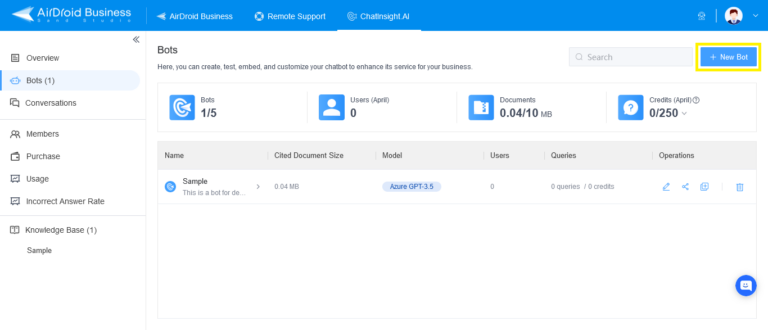
- Step 4. Set Up the Bot
- Configure the "Basic Settings" by choosing a Bot Avatar and the first message, along with example queries.
- Next, head to the "Data Sources" section to add the data sources you want the chatbot to pull information from when answering queries. If you created your own knowledge base in step 2, you will see it under "reference sources" and you will need to select it manually.
- Choose either the GPT-3.5 or GPT-4 version in the "Model" section. You can also determine here how strictly the bot should stick to the source knowledge.
- In the "Prompt" section, you can add new rules for your AI bot outputs as required. While ChatInsight already includes some default rules, you're free to add more as needed.
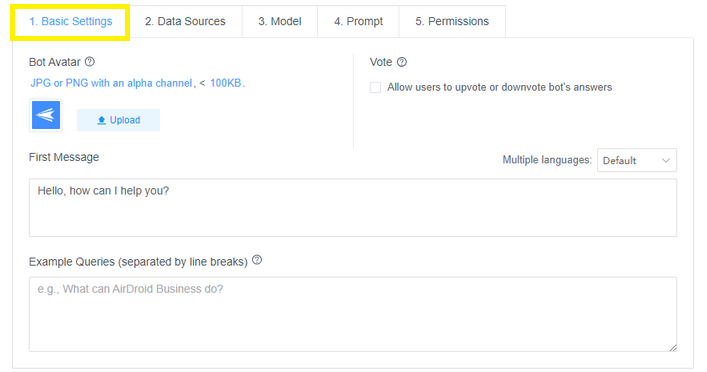
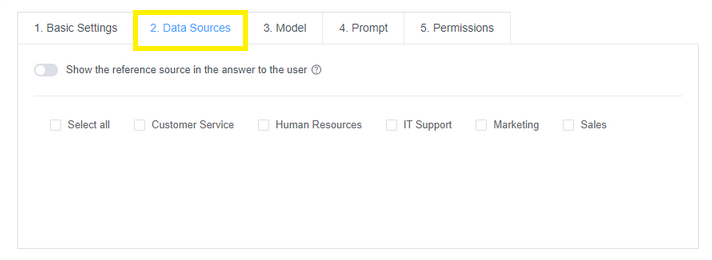
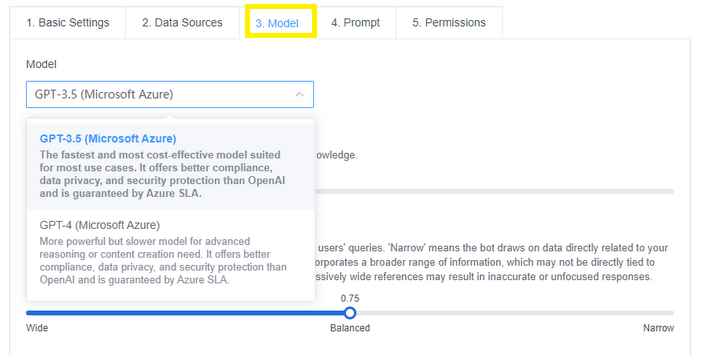
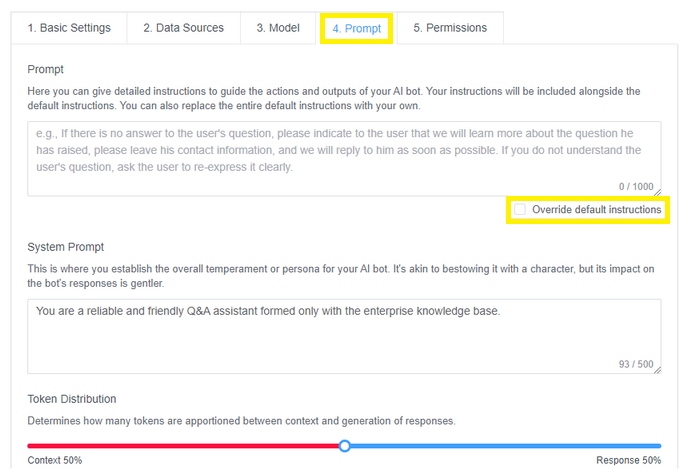
You've now successfully configured a chatbot in ChatInsight. There are three options available for deploying your bot.

- Embed Code: Receive a code snippet to embed the chatbot on your website as iFrame.
- Embed as Chat Widget: Add the chatbot as a floating widget anywhere on your website.
- Shareable Link: Share the chatbot link directly with your customers to chat with.
Benefits of Using ChatInsight to Create an AI Chatbot
- Speak your customers' language with multi-language support.
- Make every interaction unique with personalised conversations.
- Equip your chatbot with your own knowledge base for accurate info.
- Stay honest by tracking incorrect answers and updating accordingly.
- Connect instantly with customers anytime with 24/7 support.
Part 5. Best Practices for Marketing Chatbots
Most internet users prefer using chatbots for fast and simple communication. However, if a chatbot doesn't meet their expectations, it can lead to frustration and a negative perception of your brand.
If you're thinking about adding a chatbot to your business, it's crucial to avoid common mistakes. To create an effective chatbot strategy, here are some best practices for marketing chatbots you should consider:
1Define Marketing Objectives and Target Audience
The first crucial step in creating a chatbot strategy is to clearly define your marketing goals and who your target audience is. You need to decide the main purpose of your bot, like generating leads, boosting sales, or offering customer support.
Before you start building a chatbot, many platforms will need to know your marketing goals and some information about your audience. This makes sure the chatbot answers fit what your audience is looking for.
2Configure Chatbots Differently for Different Marketing Platforms
When creating your chatbot, make sure to customise it for each marketing platform. This involves knowing the users on each platform and designing the bot's responses to meet their needs.
Since user expectations differ across platforms, it's crucial to choose the right chatbot for each one. Using platform-specific features, like Quick Reply on Facebook Messenger, can significantly increase click-through rates.
3Trigger Chatbots at the Right Time and Place
It's important to place chatbots strategically, such as on high-traffic pages or during crucial customer interactions. If a chatbot pops up too soon or in the wrong spots, it will just annoy users.
You can trigger chatbot in different ways, like how long a user spends on a page, how much they scroll, or specific actions they take.
For instance, a B2B software company could use a chatbot on its pricing page to quickly answer questions about subscription plans or features.
4Avoid Misleading Users
The first rule in chatbot marketing should be not to pretend to be human. Always be clear that your users are interacting with a bot. Imagine if a customer asks a chatbot something it can't answer. Giving a wrong answer can cause confusion and make users unhappy.
It's better to program your chatbot to admit when it doesn't know something, perhaps saying, "I'm not sure, but let me connect you with someone who can help." This keeps things clear and builds trust.
5Test
You can't expect a chatbot to work perfectly right from the start. It requires manual testing and checking of its responses. Testing is crucial, not just for the chatbot you've built, but also for chatbots used in marketing across various platforms.
It's important to constantly research, enhance, and update your chatbots to ensure they function as intended and effectively answer queries. Make sure to test the chatbot across different devices, browsers, and internet speeds to provide a good user experience for everyone.
Conclusion
The use of chatbots in marketing is quickly gaining momentum and it is easy to see why - they can handle 70% of customer queries without any human intervention required.
Now it is your time to review the chatbot marketing example and best practices we've discussed. Use the ChatInsight platform to develop your own custom AI chatbot for effective marketing.








Leave a Reply.